- News
- Reviews
- Bikes
- Accessories
- Accessories - misc
- Computer mounts
- Bags
- Bar ends
- Bike bags & cases
- Bottle cages
- Bottles
- Cameras
- Car racks
- Child seats
- Computers
- Glasses
- GPS units
- Helmets
- Lights - front
- Lights - rear
- Lights - sets
- Locks
- Mirrors
- Mudguards
- Racks
- Pumps & CO2 inflators
- Puncture kits
- Reflectives
- Smart watches
- Stands and racks
- Trailers
- Clothing
- Components
- Bar tape & grips
- Bottom brackets
- Brake & gear cables
- Brake & STI levers
- Brake pads & spares
- Brakes
- Cassettes & freewheels
- Chains
- Chainsets & chainrings
- Derailleurs - front
- Derailleurs - rear
- Forks
- Gear levers & shifters
- Groupsets
- Handlebars & extensions
- Headsets
- Hubs
- Inner tubes
- Pedals
- Quick releases & skewers
- Saddles
- Seatposts
- Stems
- Wheels
- Tyres
- Health, fitness and nutrition
- Tools and workshop
- Miscellaneous
- Cross country mountain bikes
- Tubeless valves
- Buyers Guides
- Features
- Forum
- Recommends
- Podcast
 Specialized Retul 3
Specialized Retul 3How to choose your cycling shoes

This article includes paid promotion on behalf of Specialized Bicycles
Your body makes contact with the bike in just three places – your hands, backside and feet – and all your power goes through your shoes, so it’s crucial that you buy the right ones.
The footwear team at Specialized works closely with professional riders, listening to issues these riders experience in the critical stages of competition and innovating shoe design to deliver solutions for performance gains. Rob Cook has been the Design Director at Specialized Footwear for over 10 years, leading the way with the brand’s shoe development.
We spoke to Rob to find out what drives their shoe design, what aspects are critical for performance, and how they deliver this.
Why is shoe choice so important for performance?
“Shoes are the powerhouse,” says Rob. Shoes are where you are applying force to the bike. It’s all about getting your body’s power into a bicycle, so you can move further forward and shoes are the main part of that. I would say shoes are the most personal part of cycling equipment.
“Tom Boonen was the rider who, when travelling on a plane, would put all his kit into the main luggage apart from his shoes, which would go in his hand-carry on.
“You forget your shoes and turn up at a race, it is the worst situation. Borrowing a helmet or lycra, or even a similar saddle, is easily enough done, but not shoes with the setup you are super happy with and used to.”
Shoes are the container through which you hammer all you’ve got to give. They’ve got to support you, while also allowing you to deliver your best. Stiffness and comfort need to align with the anatomy of your foot, your pedalling style and the demands of your event. That’s a lot for a shoe designer to get right…
Why there’s more than one S-Works level shoe
“In the past, we always used to do one S-Works level shoe and tried to make it for everybody—but for some riders at the ends of the spectrum it just wasn’t suitable,” says Rob
Shoes are very individual and need to cover the specific needs of riders.
“Giving riders options is important because everyone is riding for different reasons, as well as shaped slightly differently and experiencing different feelings,” Rob notes.
“It is interesting listening to specific riders as opposed to trying to make everybody happy with a middle of a road product—that’s not special for anyone.”
That said, the S-Works 7 is the brand’s multi-purpose shoe which Rob says is “not specific for anything but really good for everything”.
But with having this option, Rob explains that with the other shoes they develop they can implement different features “without risking the normal shoe”.
“We have realised after working with so many different riders that you need to break it out into the specific needs of the rider types.”
S-Works Vent: the best choice for maximum airflow
Last year, that approach resulted in the launch of the S-Works Vent which focused on airflow with a heavily-vented mesh upper and sole.
“Through working with Christoph Strasser, who did the Race Across America, riding for 20 hours a day through 40-degree heat, we built in more ventilation in the S-Works Vent for riders out in more extreme conditions.”
Getting a good amount of airflow can make a difference both to comfort and performance.
“In those extreme events, he was having issues like his feet changing size as they swelled because of the heat and lack of ventilation. Learning of Strasser’s experiences gave us an insight into the troubles riders have at certain times.”
S-Works Ares: the new design for the sprinters
Away from the extreme, towards the blisteringly fast… Tour de France green jersey winner Sam Bennett was fundamental to shaping Specialized’s most recent release, the Ares shoe. With such close collaboration with Sam, this shoe closely addresses the needs of sprinters.
“Sam’s feedback about rolling action and pulling away from the bike on the upstroke when out the saddle was a revelation.
“He was able to articulate something that he could only feel on the bike, only feel in the real world.”
> Check out our Specialized S-Works Ares first ride review
With this, Specialized can make strides in the development of areas beyond the obvious stiffness vs lightweight battle, for improved performance. Going faster is also down to the closure system and how this works together with the anatomy of your foot and your pedalling style.
Why stiffer isn’t always better
“There was a time when you’d say okay stiffer, stiffer, stiffer, equals faster, faster, faster, but that’s not the case and even with professional riders the stiffness of the outsole is not a deciding factor,” Rob says.
“At a certain point, there’s an intangible, an unmeasurable difference between stiffness and what the human body can exert.
“Our outsoles are made like a sandwich construction with two layers of carbon and in-between there’s a distance holding foam that is non-compressible. It doesn’t give at all.
“In the past, we’ve given pro riders full carbon shoes that are incredibly stiff but they haven’t noticed the difference between this and our sandwich outsole.”
While stiffness is still very important, Rob says that development is not going to continue much in that direction.
“We have realised we don’t have to go even stiffer and instead we can focus on removing weight as stiffness is maintained.”
Why the closure system makes a big, big difference
While the stiffness of the shoe is important for transferring power, Rob also explains that the closure system—in terms of how the foot is being contained and held to the plate—is vital for performance.
“Sam Bennett told us about these movements he was experiencing in the shoe. He found he wasn’t in contact with the outsole in an optimal way, the whole way through the pedal stroke.”
Pushing the power through the outsole in the downstroke is only part of the shoe’s role; how it supports the upstroke is another aspect that can be optimised for performance gains.
Rob says: “The transition zones at the top and bottom of the pedal stroke are where we found you can have lag in the system. You can experience a delay in applying force or a delay when you start lifting your foot as it unweights from the outsole.
“Eliminating this for sprinting is critical. If we can remove a micro delay from each pedal stroke that really adds up and makes a difference at the finish line.”
The architecture of the closure, in terms of where it is positioned and built into the shoe, is key to this because it dictates how your foot is held.
“With the Ares shoe, the closure is shifted to the medial side [towards the inner side of your foot] as it designed to lock the arch to the plate to avoid the rolling action Sam was describing.”
When implementing these performance-focused structures into the shoes, Rob explains that the designers also need to be aware of the general anatomy of the foot.
“Just generally, we know that some riders have a bony protrusion on the lateral side of their foot, in between the heel and little toe, so we build the shoes in consideration of that.”
How comfort is built into the design
Listening to the experiences of specific professional riders has directed Specialized shoe development to unexpected realisations. Comfort is not addressed by just some additional padding, it’s about the design.
“Often with pro riders you think they can tolerate all sorts of pain that nobody else can, but Sam’s experiences showed that even sprinters have such low body fat, like 5%, and that they need more comfort built into the shoes,” Rob asserts.
Responding to this, Specialized was able to build the closure around these physical elements, for a comfortable hold that allows the riders to deliver.
“The tendon at the front of the foot can become very prominent from sprinting and pulling on the upstroke. We discovered that the S-Works 7 closure system wasn’t working for riders like Sam because it wrapped directly over this tendon – which, in Sam’s case, is massive.
“This is why the Ares shoe wraps from the lateral side across this area, as the closure we built is designed to have extra space around the protruding tendon.
“With this new design, we can hold and apply force to an area of the foot which is less sensitive, with fewer blood vessels and nerves.”
The Ares closure system also triangulates retention across the midfoot and thereby spreads the pressure out over a larger surface area.
Rob stresses: “It’s not like you can apply force wherever you want on a foot. We need to ensure blood flows down the front of the foot. If you inhibit that then you start getting feet which are falling asleep.”
Your shoes need to work with your individual pedal stroke
As well as the different anatomy of riders’ feet, the pedal stroke and how riders apply force differently comes into it.
Rob points out: “Often when you look inside a shoe and you see the footbed of an old inlay sole, you can almost see how riders are exerting pressure just from the way the material is packed out and deformed. Sometimes you’ll see riders almost clawing with their toes through the bottom of the pedal stroke.”
The closure needs to fit the pedal stroke, and it depends on how much ankling riders do.
“At the extremes, you have Boonen who was pretty much a 90-degree piston, and then there’s Contador who used to flick his heels and toes at the bottom of every pedal stroke,” Rob explains.
For a rider with a lot of ankling, force is exerted at the back of the shoe because they are using the upstroke.
“Here a shoe with a really good heel fit is important. This kind of rider applies force to the shoe at that part of the pedal stroke so if they are getting movement there, they are not performing efficiently.”
The best stiffness of the shoe’s upper is down to rider preferences based on how it feels during their pedal stroke.
“Some riders prefer a stiff shoe like the S-Works 7. It’s not hard but it’s supportive so it feels like it is containing your foot when you put it on. You feel like your movements are limited by the product and as if you are working against the inside of the shoe.
“Others prefer something like the Exos with its foot wrapping feel which is soft, flexible and malleable.”
How important is it to stick with the same shoes?
While it is good to experiment with shoes that support and hold your foot in different ways to find a design that works for your pedalling style, you need to factor in an adaption period.
The body needs to learn to gel with a new setup, which is why the professionals don’t like switching kit and equipment in the middle of a season.
“If you have a subtle change, whether that is a position change or a shoe change, then you could argue that all that training and fine-tuning, is suddenly useless as you’re firing completely differently,” says Rob.
“When the rider’s foot is held in a different way in a shoe, force is then exerted in a different way to the shoe.”
Then there’s also the added complication of ensuring your cleat position is set up perfectly.
“There’s almost a superstitious part of cycling when it comes to cleat position. You’ll have riders who will only let a certain mechanic sort their cleats, or some who will do it themselves because they don’t trust anyone else to get it just right,” Rob says.
The process of how shoes are assembled is critical for achieving the correct cleat positioning between the same size shoes, and this is a process to which Specialized has given much thought.
“The important dimension affecting pedalling is the heel back to the bolt hole position for the cleats, so we designed a process to guarantee consistency with the cleat position.
“To ensure the distance is the same, our carbon outsole is recessed into the heel counter. This is then bonded to the upper, and we have just got to make sure that the heel is fitting into the back of the shoe correctly.
“We want to design every single stage that affects fit so that riders can be confident they are getting a consistent product.”
With this consistency of fit, Rob says that riders can switch shoes from one pair of, say, 45 size Specialized shoes, to another pair of the brand’s size 45 shoes, and not have to question whether the holes are in the same place.
How Specialized’s Body Geometry features work with your foot's anatomy
“With cycling, your body is behaving like a machine,” says Rob. “It is really important to listen to the body’s anatomy to provide the best connection between you and the bike, in a way that allows your body to work as it needs to.
“Shoes are fundamental to making sure riders can perform at their best while being comfortable, and with this, reducing the risk of injury is also important.”
Specialized Body Geometry products are designed to achieve this, and scientifically tested to ensure they work.
Rob says: “Body Geometry within our shoes is keeping the foot, knee and hip movement in line, in a controlled way. It has become an approach to how we design and build products, as opposed to some features that we include.”
The carbon in the arch area of Specialized shoes wraps a little bit higher than normal. This is called the Longitudinal Arch and is there to provide a supportive edge.
“The arch in the foot is great as a shock absorbency system when you are walking or running, but cycling is not an impact sport,” says Rob. “Instead, for performance improvements, it is about any removing lag and making a rigid lever out of your foot. Putting pressure down on your foot, you don’t want it to deform too much because this loses power.
“The Longitudinal Arch—combined with our three different Body Geometry footbeds which have different levels of foam support for different arch heights—helps support the body’s natural arch structure.
“We’ve all probably looked down at our knees when we are pedalling and seen a little movement—some riders’ knees move in a figure of eight through the pedal stroke.
“The Longitudinal Arch is all about making sure that when you are on the downstroke your knees are not collapsing in, which is called valgus collapse. When your arch is not supported and you are on the downstroke, your arch collapses and your knee falls inwards.”
The more power you put into this system, the more extreme this movement can be, Rob explains.
“When you are on a trainer or just rolling along, it may seem like there’s nothing going on here but when you enter a high-performance situation, putting out a lot of watts in the system, it behaves completely differently.”
The idea is that Body Geometry works out what is happening naturally when you're pedalling and it steps in to support this movement.
If you have a high arch, putting a foam support in there stops the knee from collapsing in. Then there’s the Varus Wedge which is a 1.5mm outward tilt that is added to the outsole of Specialized’s shoes.
“The shoe outsole at the forefoot is not flat to the pedal. It’s at a slight angle so your little toes are lower than your big toe at the inside of your foot,” Rob says.
“Through our Retül [bike fit] assessments, we found the majority of people have this slight angle in their feet, especially at their longest extension—so we built that into the shoe to allow for the foot’s natural movement.”
Lastly, the Metatarsal Button has been built into the footbed to encourage blood flow in the forefoot.
“The closure of cycling shoes typically wants to bring all the bones together and this creates restrictions in the blood flow of the forefoot,” Rob explains.
“By adding a slight volume underneath the foot, the critical area where the blood vessels are cannot be pinched.”
These touches together support the foot inside the shoe in a way that is comfortable, and at the same time in a way that reduces the risk of injury.
What’s next?
What comes next is largely down to feedback from the pros.
Rob says: “I’m looking forward to the next team camp and interactions with riders to find out about how they’ve been getting on.
“It’s about asking the riders different questions and responding to their experiences with a shoe that directly solves that issue, rather than releasing something to please everyone."
Anna has been hooked on bikes ever since her youthful beginnings at Hillingdon Cycle Circuit. As an avid road and track racer, she reached the heady heights of a ProCyclingStats profile before leaving for university. Having now completed an MA in Multimedia Journalism, she’s hoping to add some (more successful) results. Although her greatest wish is for the broader acceptance of wearing funky cycling socks over the top of leg warmers.
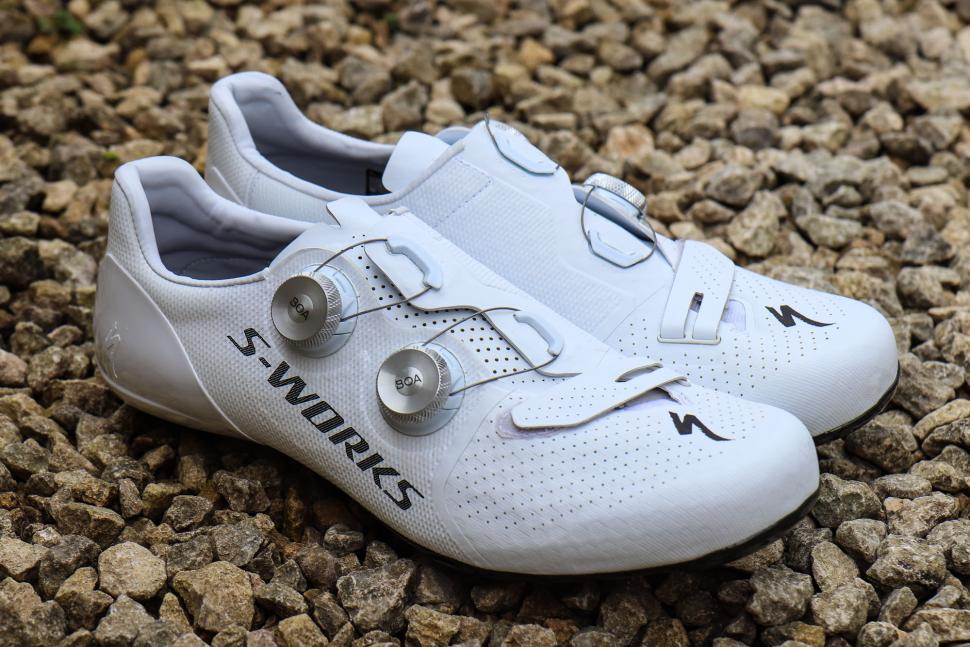
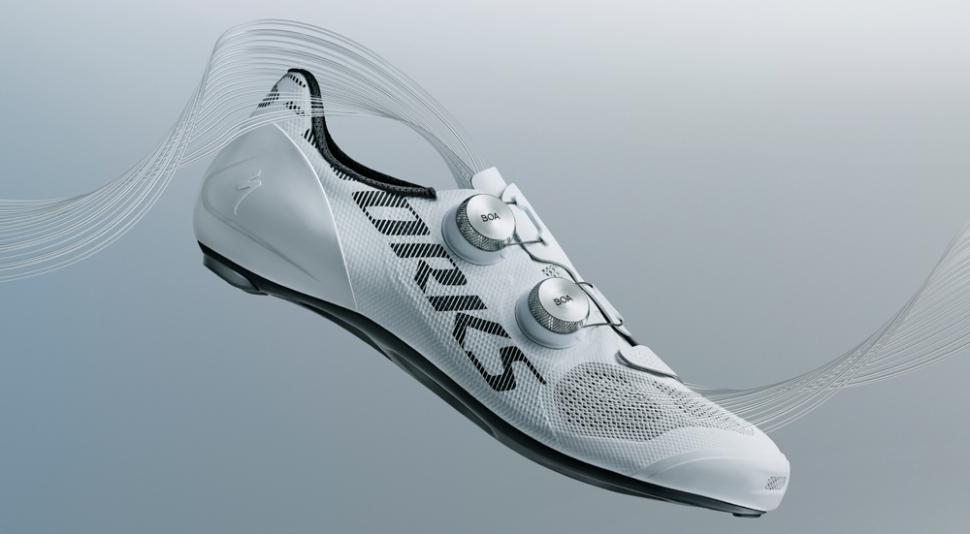
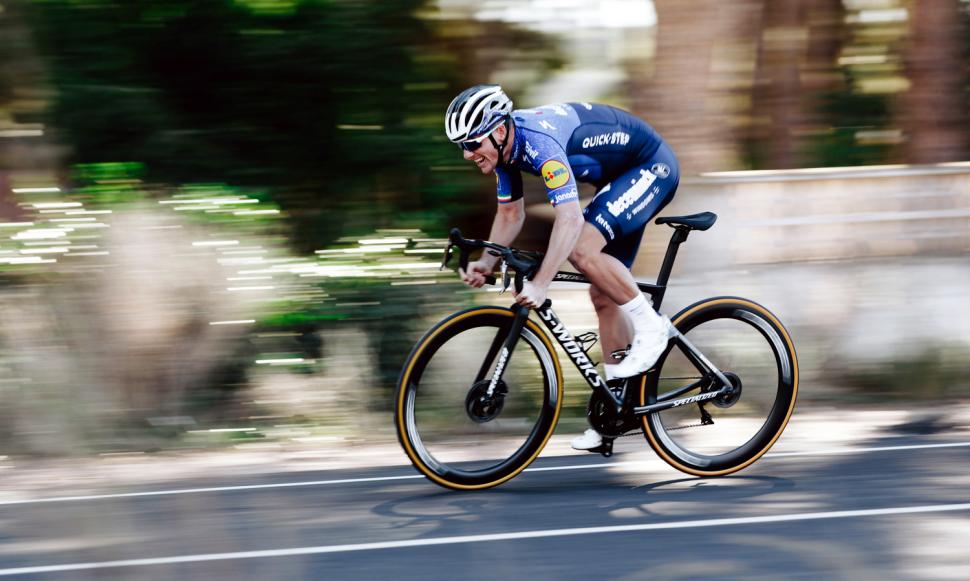

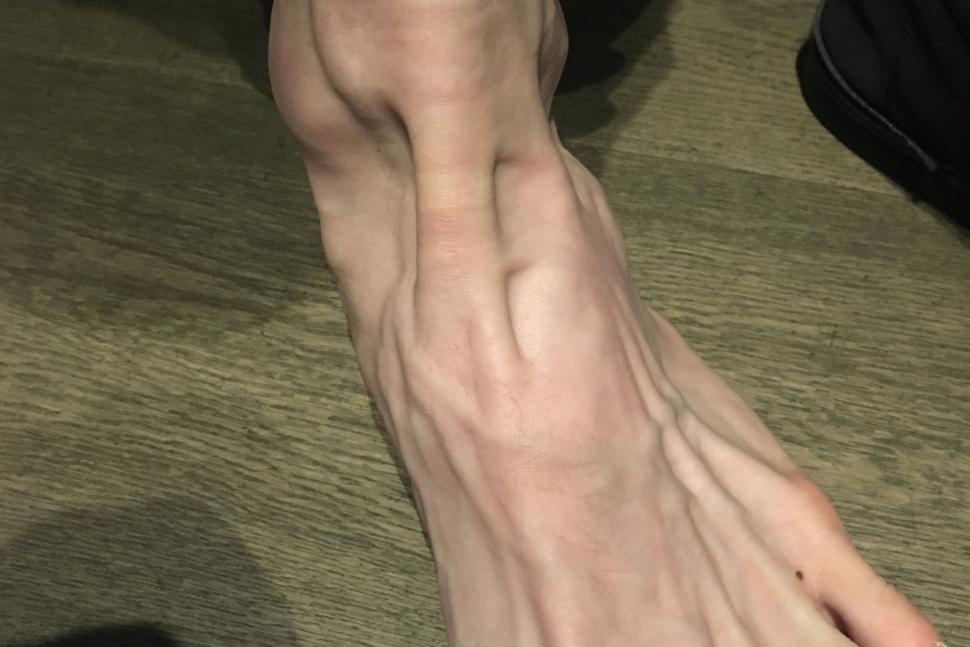
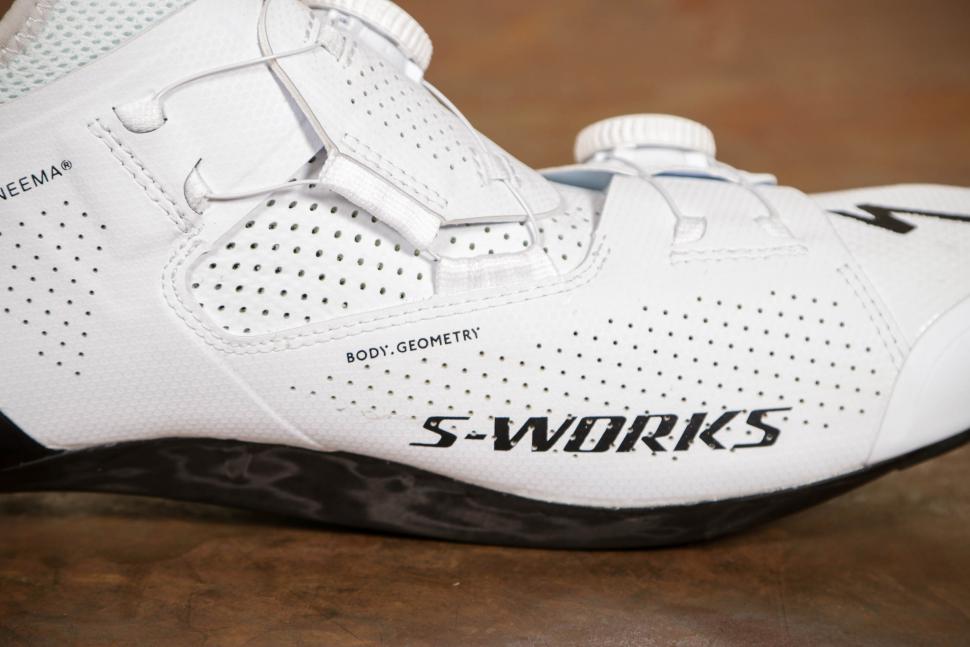
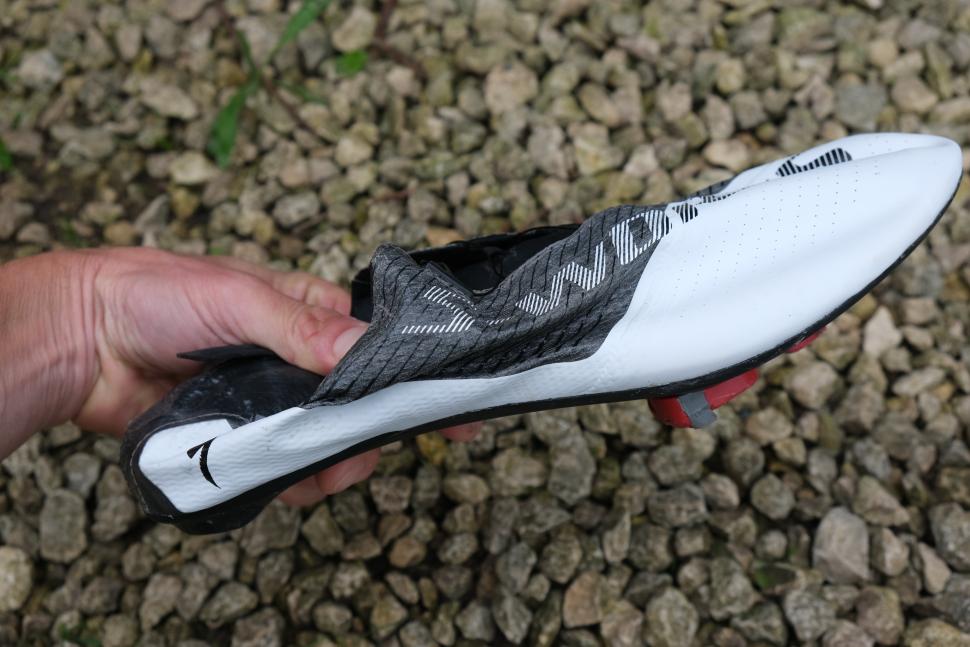

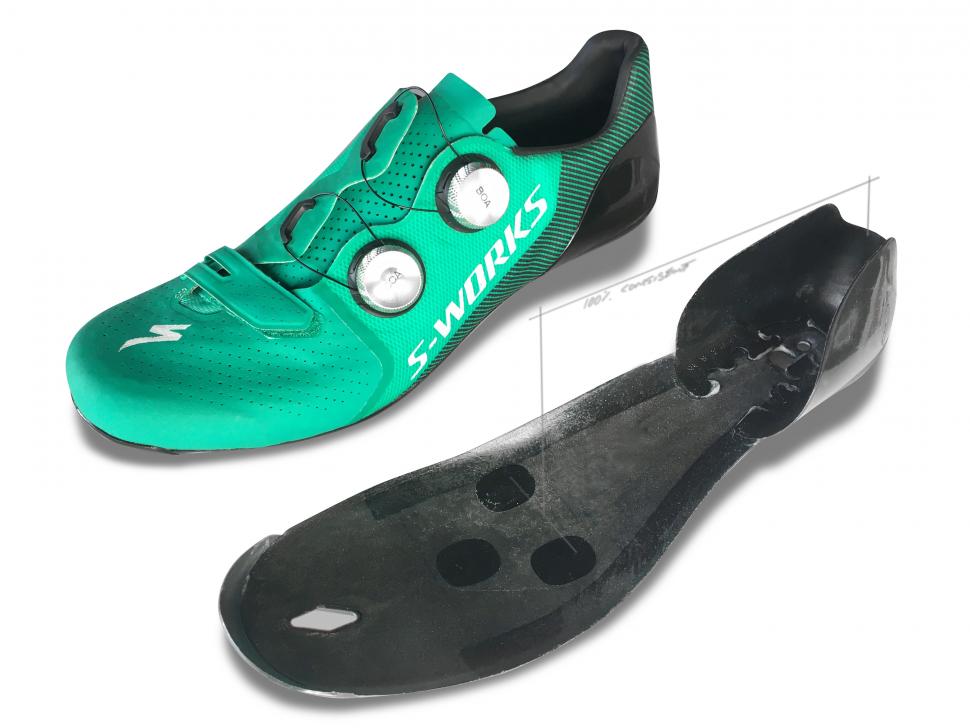
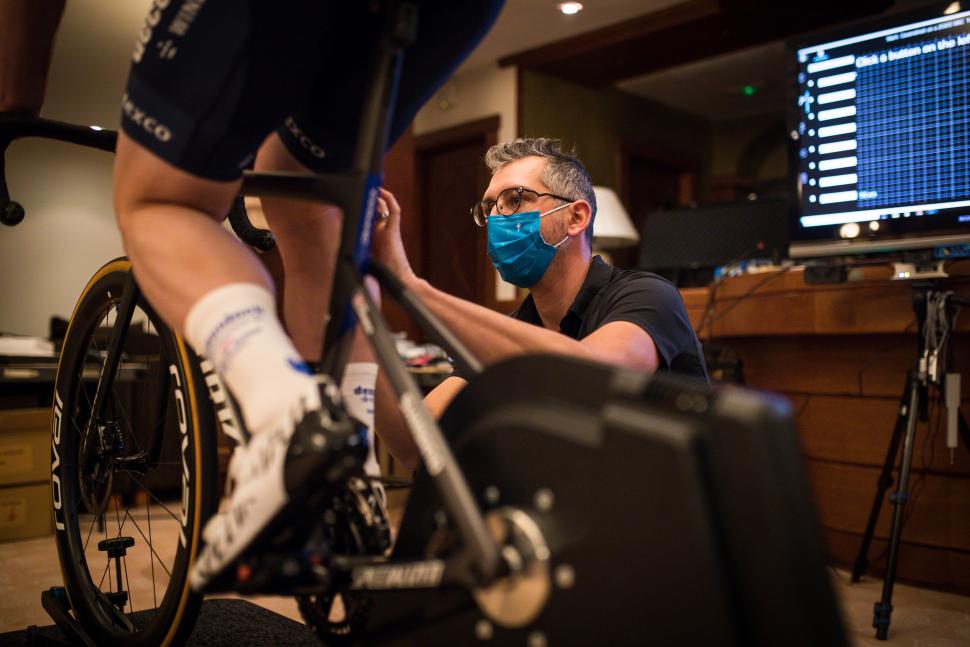
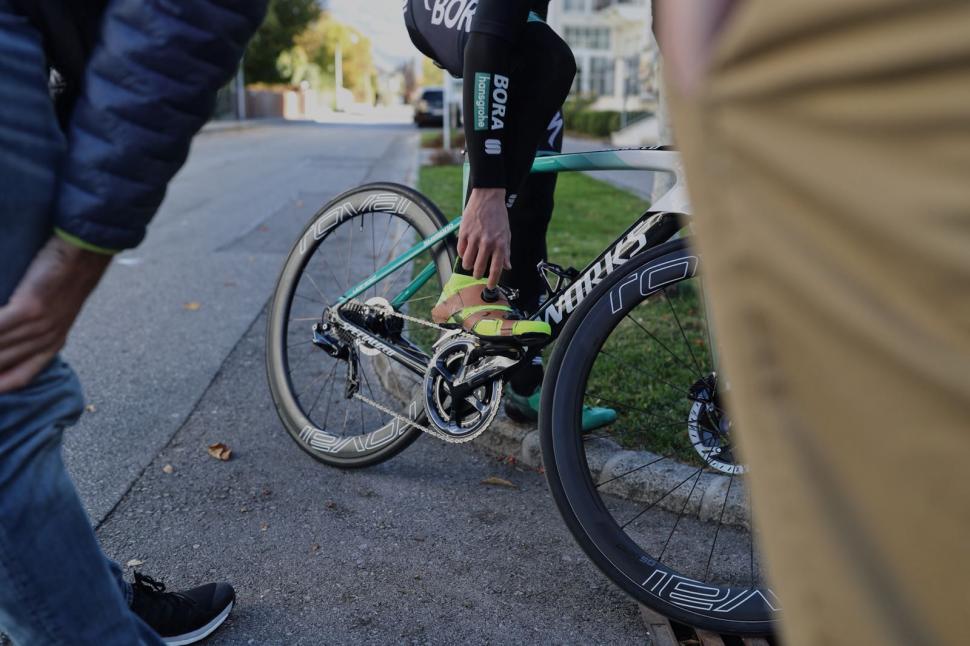
One does not necessarily lose one's principles as one's net worth increases.
No, because the guarantee is not transferable, so expires if you sell the bike. Had you had the bike from new, then I'm not sure because I don't...
Cannondale are made in Taiwan and Vietnam, I thought?
One really has to wonder how long this sort of "justice'' goes on before some seriously injured cyclist upon recovery buys a big junker of a truck...
Extendable dog leads should be outlawed. They are dangerous for everyone even the stupid dog walkers who use them.
Why do I ride on the pavement? Because the A82 through Fort William where I live is bad enough without me holding up the traffic and it's...
Somewhat ironic, isn't it, when a large percentage of road racing fans won't be able to watch it on TV?
It was nowhere near than bad, or at least the traffic cleared fairly quickly. I went through this area at 6pm last night and it was free flowing if...
Still got that weird Boardman short legs, and longer body geometry thats got me running an 80mm - 17 degree stem on a medium-sized frame and I'm 5...
Hmm, interesting....